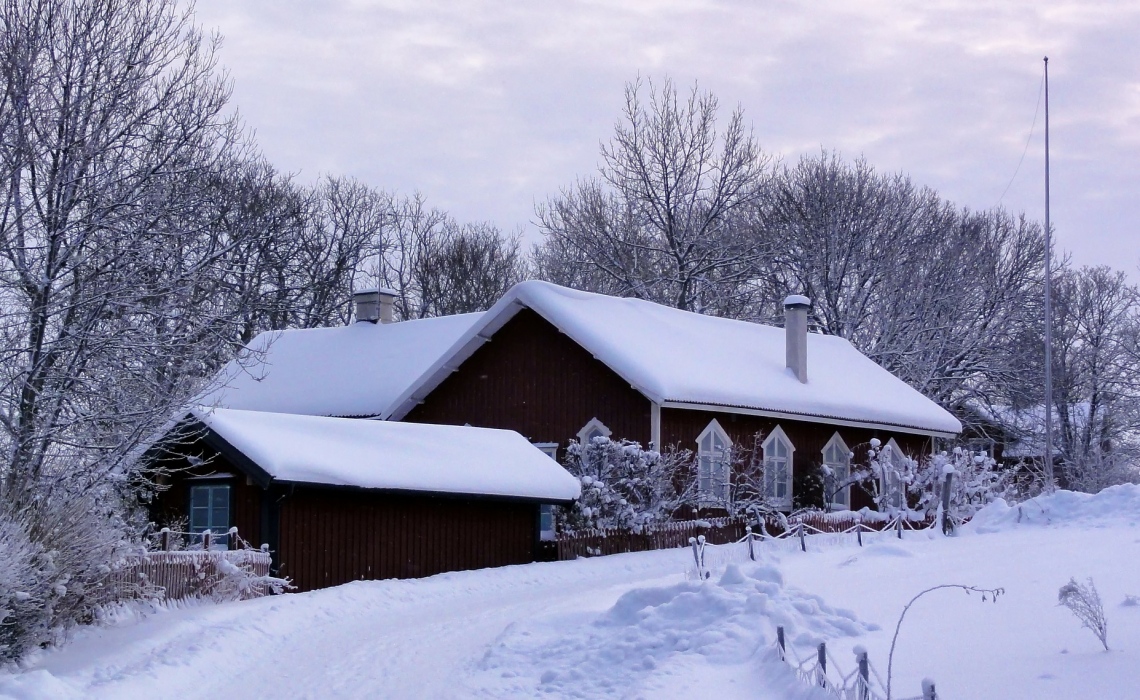
You may be happy to see winter coming your way since after all there is something magical about the snow. However, homeowners will have to take care of certain things before they start planning their winter activities. But this doesn’t have to be a troubling task and this winter home maintenance checklist will make sure you do everything right and in time.
1. Check your doors and windows
Windows and doors can easily cause problems during the heating season by letting the warmth escape outside. Therefore, before winter comes, check your doors and windows if they have gaps and whether you feel a draft when placing a hand over the frames. You can easily deal with this problem by weatherproofing them with strips or caulk, as well as seeing if they close properly.
2. Clean the lint filter on your dryer
A dryer is heavily used during winter which means it’s time to clean the lint filter and empty the dryer hose. Each year, thousands of households experience fires because of clogged hoses and neglected driers. Additionally, regularly check the vent and exhaust during the operational period, and vent the area always after the dryer finished its task to avoid dust build up in the air.
3. Do the yearly chimney sweep
Every year, perform fireplace inspection and get your chimney swept for safety reasons. Namely, clogged chimney leads to fires and carbon monoxide poisoning. This may be an expensive item on this checklist, but it will protect both your property and your family from any damage.
Additionally, see if the flue on the chimney is operational since if not you may feel draft when not using the fireplace. Also, some animals like birds and rodents may enter your home, while snow and rain can cause moist in the chimney and fireplace.
4. Determine the state of your roof
If you perform regular maintenance of your roof, it’s most likely that you have nothing to worry about. However, heavy rainfall and winds may have caused some small cracks that can turn into a full-blown disaster under piled up snow. Remove the moss from shingles and hose down the piled up dirt, but carefully check for holes from inside and outside of your house.
5. Unclog your gutters and downspouts
After autumn, gutter and downspouts are full of leaves, debris, and dirt that can lead to serious damage to the structure of your house. Namely, during the snow melting, the water can overflow the gutters and enter the walls of your home causing leaks and damage. So, to prevent this, you should clean your gutters before the first snowfall.
This is something you can do by yourself with ladders, a pair of gloves, rake and a garden hose, or you can hire professionals to do it for you. Once you are done, check the gutters and downspouts for rust, cracks or holes so you can repair the damage in time.
6. Pay attention to trees
Snowfalls can cause build up on trees and make their branches heavy which will lead to them breaking and falling on your property. You can trim the branches if possible in the fall or simply pay closer attention to trees close to your home during winter. Brush off the snow gently without shaking the tree so the branch doesn’t break and injure you after fall.
Additionally, have a specialist take a look at your tree to determine whether it is healthy and stable. This will help you to treat the tree with proper remedy, prevent its further deterioration and tell you how much of it you need to trim.
7. Prepare for the heating season
One of the most important preparations for the winter is hiring a servicing company like Woden Valley Plumbing & Gasfitting to perform maintenance of your gas heating unit. The professionals will check if the gas supply is uninterrupted, whether there are any leaks and replace or repair parts. This is something you should do before the heating season to make sure everything is working properly and safely.
Lastly
With this winter home maintenance checklist, your house will be in tip-top shape and ready for cold and snowy weather. Just don’t be afraid to invest in proper house maintenance and repairs in order to avoid expensive damage control and possible safety risks for you and your family.
